Diabetes Medication Selector
Select Your Criteria
Answer these questions to find medications that match your needs
Your Results
When a doctor prescribes a blood‑sugar‑lowering drug, patients often wonder how that choice stacks up against the rest of the market. Acarbose (brand name Precose) is a carbohydrate‑blocking agent that’s been around since the 1990s, but newer classes like Metformin or GLP‑1 agonists have taken center stage. This guide walks you through the most relevant alternatives, weighing efficacy, side‑effects, cost, and convenience so you can see whether Acarbose alternatives might suit you better.
Quick Takeaways
- Acarbose lowers post‑meal glucose by slowing carbohydrate digestion; it typically cuts HbA1c by 0.5‑1%.
- Metformin remains the first‑line choice because of its strong evidence, low cost, and weight‑neutral profile.
- DPP‑4 inhibitors (e.g., Sitagliptin) offer modest HbA1c drops with few gastrointestinal issues.
- SGLT2 inhibitors (e.g., Empagliflozin) add heart‑failure protection but raise risk of genital infections.
- GLP‑1 receptor agonists (e.g., Liraglutide) deliver the biggest HbA1c reductions and weight loss, at a higher price and injection requirement.
How Acarbose Works
Acarbose belongs to the alpha‑glucosidase inhibitor class. By binding to enzymes in the intestinal brush border, it slows the breakdown of complex carbs into glucose, flattening the post‑prandial spike. Typical dosing starts at 25mg three times daily with meals, titrating up to 100mg three times daily if tolerated.
Key attributes:
- Mechanism: Inhibits intestinal α‑glucosidases.
- HbA1c reduction: 0.5‑1% on average.
- Common side‑effects: Flatulence, abdominal cramping, diarrhea (often dose‑related).
- Cost (US, 2025): $0.30‑$0.45 per tablet, generic available.
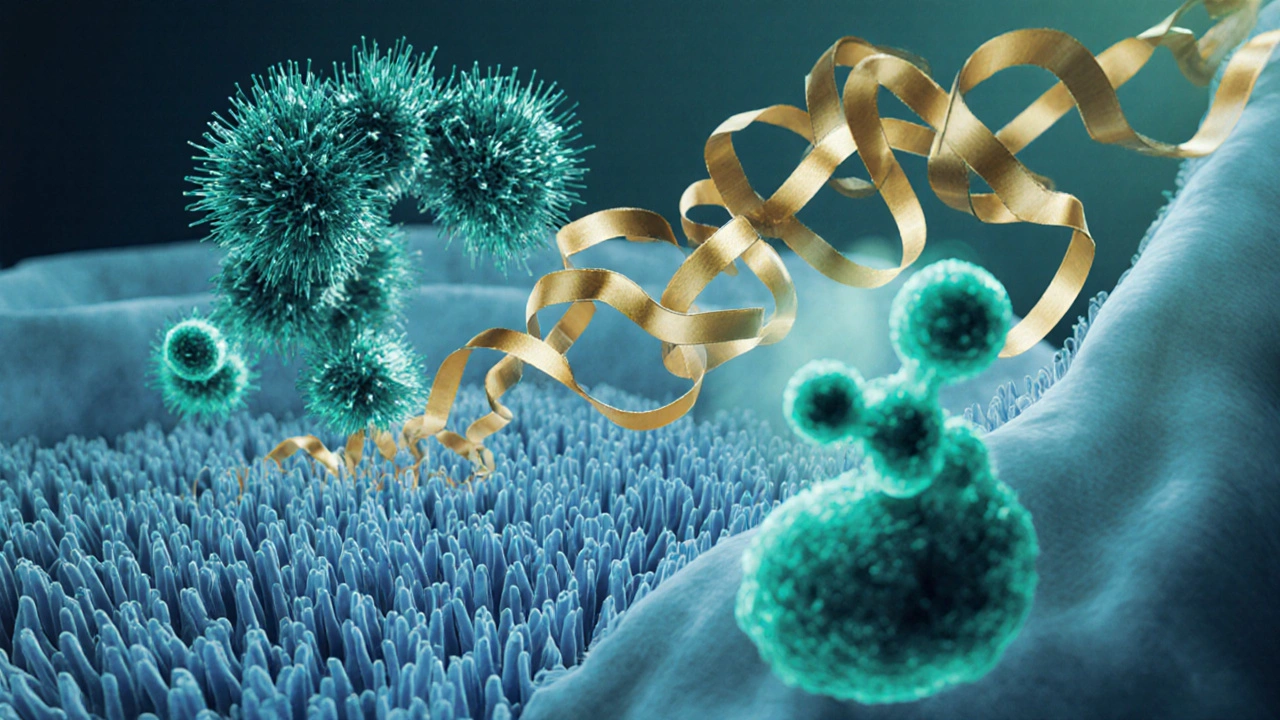
Decision Criteria When Comparing Diabetes Drugs
Before diving into the side‑by‑side table, keep these four criteria front‑and‑center:
- Glycemic efficacy: How much does the drug lower HbA1c?
- Weight impact: Does it cause weight gain, loss, or is it neutral?
- Safety profile: Frequency of GI upset, hypoglycemia, cardiovascular benefits, or rare but serious risks.
- Cost & convenience: Price per month, need for injections, dosing frequency.
Side‑by‑Side Comparison Table
| Drug | Class | Typical HbA1c reduction | Weight effect | Common side‑effects | Monthly cost (US) | Route |
|---|---|---|---|---|---|---|
| Acarbose | Alpha‑glucosidase inhibitor | 0.5‑1% | Neutral | Flatulence, abdominal pain, diarrhea | $10‑$15 | Oral, three times daily |
| Metformin | Biguanide | 1‑1.5% | Neutral to slight loss | GI upset, lactic acidosis (rare) | $4‑$8 | Oral, once or twice daily |
| Sitagliptin | DPP‑4 inhibitor | 0.5‑0.8% | Neutral | Headache, nasopharyngitis | $25‑$35 | Oral, once daily |
| Empagliflozin | SGLT2 inhibitor | 0.6‑1.0% | Modest loss | Genital yeast infection, volume depletion | $45‑$60 | Oral, once daily |
| Liraglutide | GLP‑1 receptor agonist | 1‑1.5% | Significant loss (2‑5kg) | Nausea, vomiting, pancreatitis (rare) | $350‑$400 (injectable pen) | Subcutaneous injection, daily |
| Pioglitazone | Thiazolidinedione | 0.5‑1% | Weight gain | Edema, heart failure risk | $12‑$20 | Oral, once daily |
Deep Dive Into Each Alternative
Metformin - The Gold Standard
Most guidelines put Metformin first because it balances efficacy, safety, and price. It reduces hepatic glucose production and improves insulin sensitivity. Rarely it can cause lactic acidosis, so doctors avoid it in severe kidney disease.
DPP‑4 Inhibitors - Quiet but Effective
Sitagliptin and its peers work by preventing the breakdown of incretin hormones, modestly lowering glucose without weight gain. They're popular for patients who can’t tolerate GI side‑effects of metformin.
SGLT2 Inhibitors - Cardiovascular Bonus
Empagliflozin forces kidneys to dump glucose in urine. Besides HbA1c control, large trials (EMPA‑REG OUTCOME) showed reduced heart‑failure hospitalizations and slower kidney decline. The trade‑off: higher risk of urinary tract infections and mild dehydration.
GLP‑1 Receptor Agonists - Weight‑Loss Powerhouses
Liraglutide mimics the gut hormone GLP‑1, boosting insulin release only when glucose is high. The result is strong HbA1c drops plus 2‑5kg weight loss. Drawbacks are injection‑related anxiety and higher out‑of‑pocket cost.
Thiazolidinediones - The Double‑Edged Sword
Pioglitazone improves insulin sensitivity via PPAR‑γ activation. It can be useful when other agents fail, but fluid retention and a modest increase in heart‑failure risk limit its use.
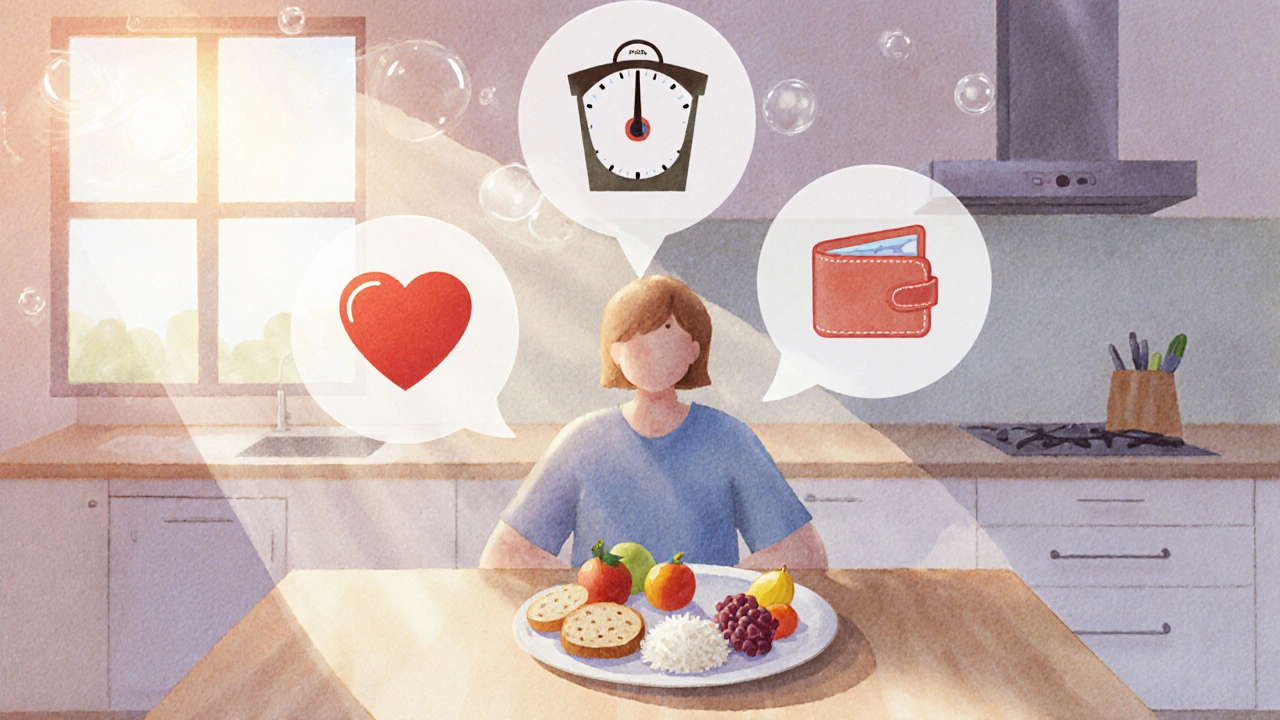
When Acarbose Might Still Be the Right Choice
Even though newer drugs shine in many categories, Acarbose shines for a few specific scenarios:
- Patients who need aggressive post‑meal glucose control but are already on metformin and cannot add another systemic agent.
- Individuals with mild renal impairment where metformin dose reduction is required.
- Those who prefer an oral regimen despite gastrointestinal side‑effects.
- Cost‑sensitive patients who can’t afford newer branded agents.
Because Acarbose works only in the gut, the risk of hypoglycemia is essentially nil when used alone.
Practical Tips & Common Pitfalls
- Start low, go slow: Begin with 25mg TID; ramp up only after tolerating the GI effects.
- Take with the first bite: Missing a dose means the next meal won’t get the protective effect.
- Combine wisely: Pairing Acarbose with metformin often balances fasting and post‑prandial control.
- Watch for malabsorption: Persistent severe diarrhea may require dose reduction or a switch.
- Insurance tricks: Some plans list Acarbose under “Digestive enzymes”; verify coverage before prescribing.
Frequently Asked Questions
Can I take Acarbose with Metformin?
Yes, the two drugs act on different pathways-Metformin lowers fasting glucose while Acarbose blunts post‑meal spikes. Most clinicians start Metformin first, then add Acarbose if post‑prandial readings stay high.
Why does Acarbose cause a lot of gas?
Because it prevents carbs from being fully broken down in the small intestine, the undigested carbs reach the colon where bacteria ferment them, producing gas and sometimes diarrhea.
Is Acarbose safe for people with kidney disease?
Acarbose is not cleared by the kidneys, so it is generally safe even when eGFR falls below 30mL/min/1.73m². However, always discuss dosing with your provider.
How does the cost of Acarbose compare to newer drugs?
Acarbose’s generic price is around $10‑$15 per month, far cheaper than SGLT2 inhibitors ($45‑$60) or GLP‑1 agonists ($350‑$400). This makes it attractive for patients with limited insurance coverage.
What HbA1c reduction can I realistically expect from Acarbose?
Clinical data show an average drop of 0.5‑1% when taken consistently with meals, especially when combined with a baseline therapy like Metformin.
Choosing a diabetes medication isn’t a one‑size‑fits‑all decision. By weighing efficacy, side‑effects, cost, and personal preferences, you can decide whether Acarbose remains a good fit or whether one of the newer alternatives better matches your goals.
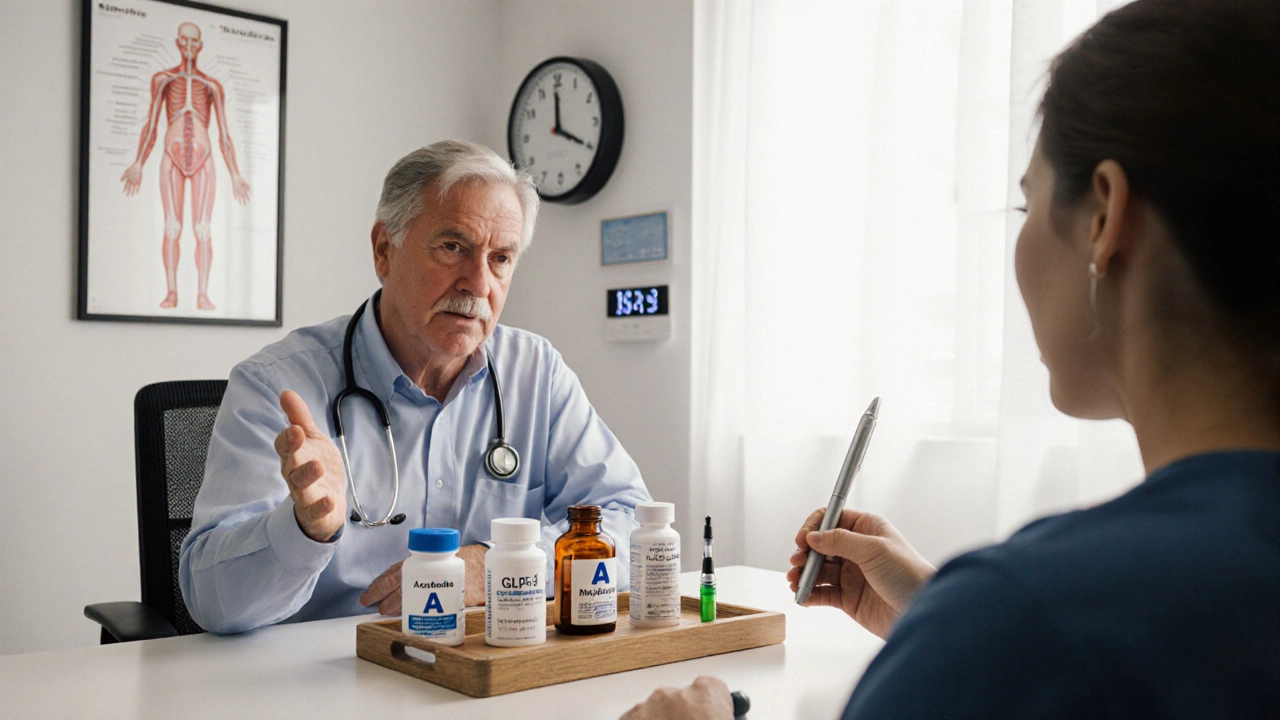
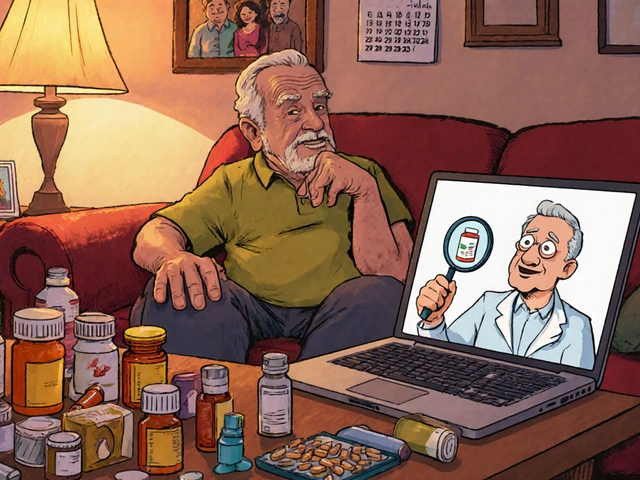
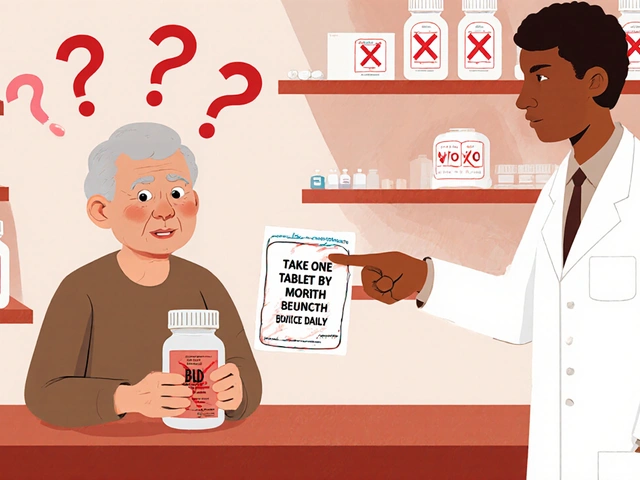
Pathan Jahidkhan on 14 October 2025, AT 20:05 PM
Life is a sweet‑to‑bitter carousel when you swallow carbs and Acarbose tries to hold the reins